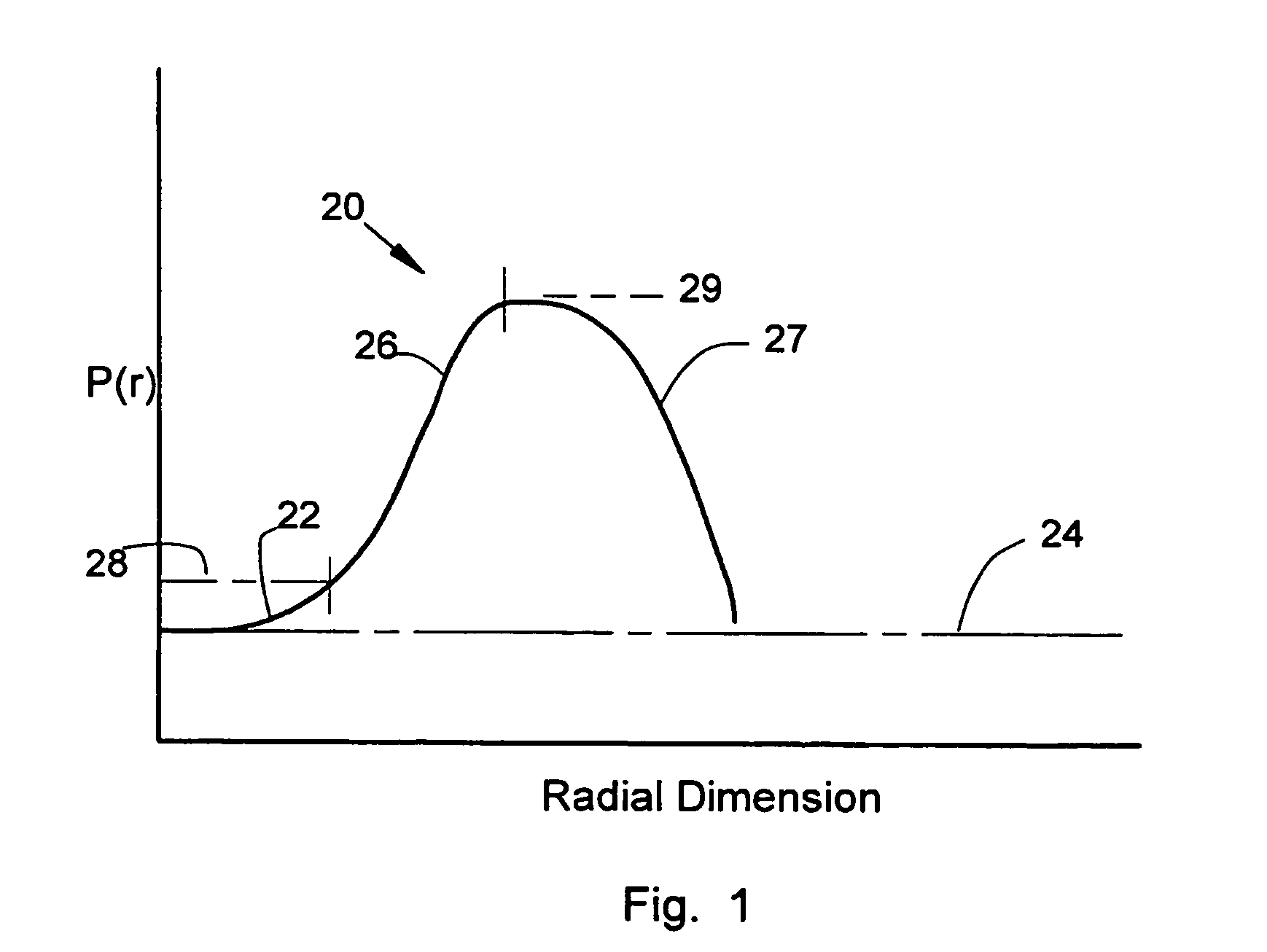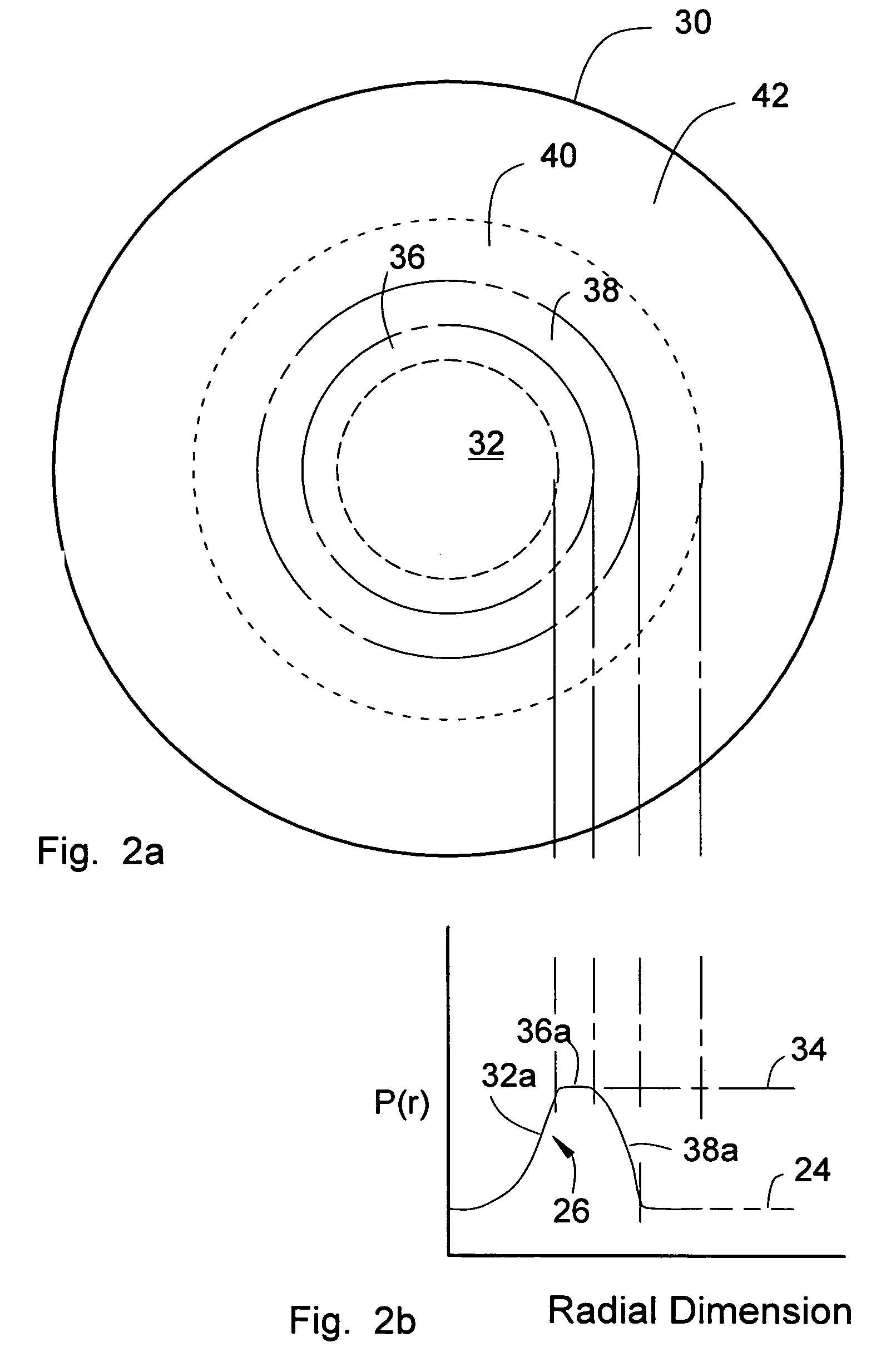Ophthalmic lenses with induced aperture and redundant power regions
a technology of induced aperture and power region, applied in the field of ophthalmic lenses, can solve the problems of loss of accommodative ability, inconvenient two modes, and the success of intra-ocular lenses and corneal lenses that are positioned on or in the eye (proximal lenses), and achieve the effects of enhancing vision, rapid power change, and enhanced vision effect of induced apertur
- Summary
- Abstract
- Description
- Claims
- Application Information
AI Technical Summary
Benefits of technology
Problems solved by technology
Method used
Image
Examples
Embodiment Construction
[0030]FIG. 1 depicts a plot of the local optical power distribution 20 as a function of radial dimension from an apex of one embodiment of the invention. The vertical axis is optical power P(r) while the horizontal axis is radial dimension from the apex. A centrally located distance vision region 22 has a distance correction power which is effectively approximated by the apical power 24. The distance correction power is that power required to correct vision for viewing of objects infinitely distant. The required distance correction power may vary with the specific requirements of the users. Focal power increases gradually with increasing radius in the distance vision region 22 until a design level power 28 is reached. The incremental power addition from the apical power 24 (distance vision power) to the power addition that causes blur at the entrance pupil margin is defined here as the design level 28. The incremental power that causes blur in most persons is found to be between +0....
PUM
 Login to View More
Login to View More Abstract
Description
Claims
Application Information
 Login to View More
Login to View More - R&D
- Intellectual Property
- Life Sciences
- Materials
- Tech Scout
- Unparalleled Data Quality
- Higher Quality Content
- 60% Fewer Hallucinations
Browse by: Latest US Patents, China's latest patents, Technical Efficacy Thesaurus, Application Domain, Technology Topic, Popular Technical Reports.
© 2025 PatSnap. All rights reserved.Legal|Privacy policy|Modern Slavery Act Transparency Statement|Sitemap|About US| Contact US: help@patsnap.com



